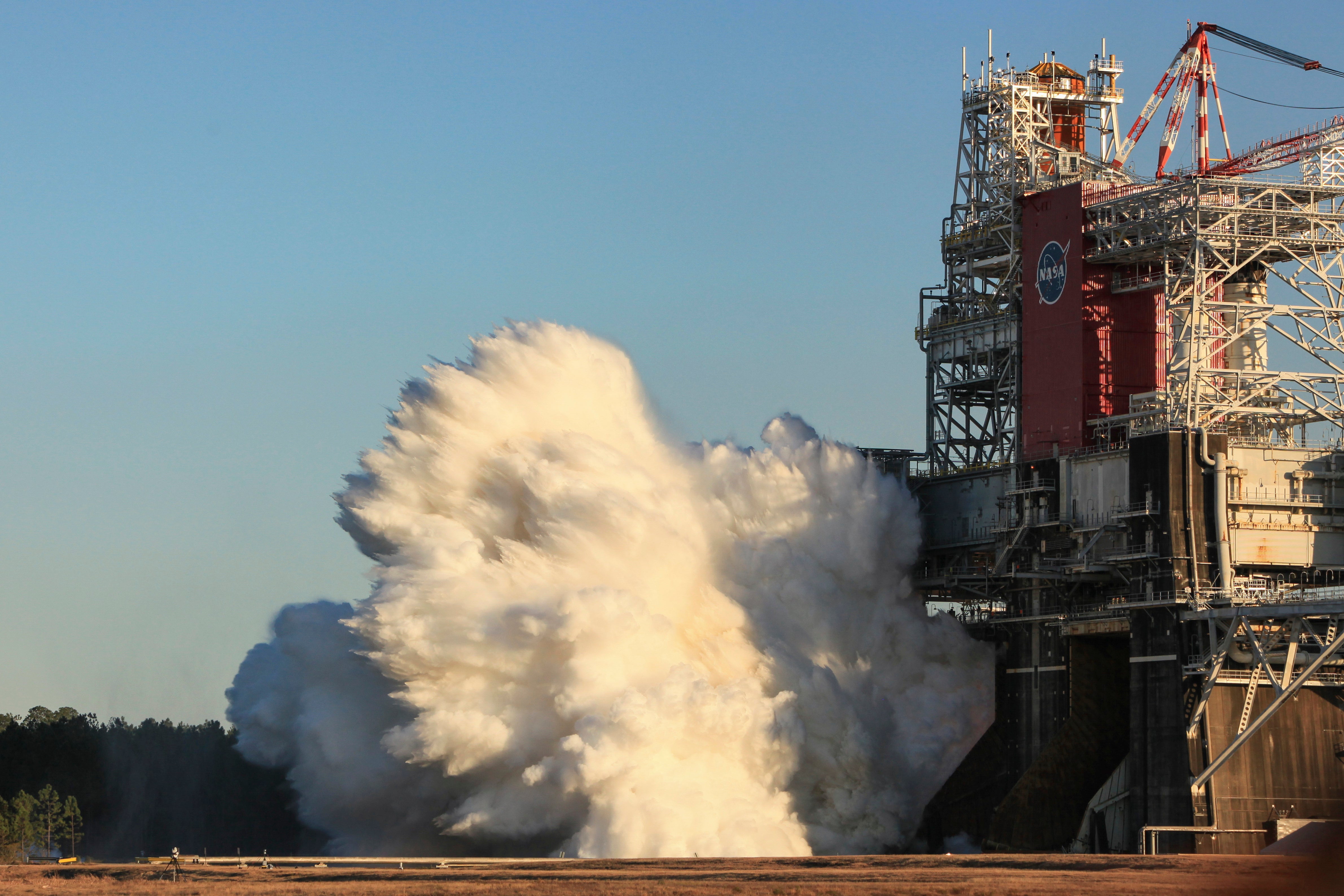Halted rocket test could stall NASA moon shot, redo possible
NASA is considering a second firing of its moon rocket engines after a critical test came up short over the weekend

Your support helps us to tell the story
From reproductive rights to climate change to Big Tech, The Independent is on the ground when the story is developing. Whether it's investigating the financials of Elon Musk's pro-Trump PAC or producing our latest documentary, 'The A Word', which shines a light on the American women fighting for reproductive rights, we know how important it is to parse out the facts from the messaging.
At such a critical moment in US history, we need reporters on the ground. Your donation allows us to keep sending journalists to speak to both sides of the story.
The Independent is trusted by Americans across the entire political spectrum. And unlike many other quality news outlets, we choose not to lock Americans out of our reporting and analysis with paywalls. We believe quality journalism should be available to everyone, paid for by those who can afford it.
Your support makes all the difference.NASA is considering a second firing of its moon rocket engines after a critical test came up short over the weekend, a move that could bump the first flight in the Artemis lunar-landing program into next year.
The space agency had aimed to launch its new Space Launch System, or SLS, rocket and an empty Orion capsule by the end of this year, with the capsule flying to the moon and back as a prelude to crew missions. But that date could be in jeopardy following Saturday’s aborted test.
All four engines fired for barely a minute, rather than the intended eight minutes, on the test stand at NASA's Stennis Space Center in Mississippi. The countdown rehearsal for the 212-foot (65-meter) core stage — made by Boeing — included the liquid hydrogen and oxygen tanks, as well as the all necessary computers and electronics.
On Tuesday, NASA attributed the automatic shutdown to the strict test limits meant to protect the core stage so it can be used on the first Artemis flight. The hydraulic system for one engine exceeded safety parameters, officials said, and flight computers shut everything down 67 seconds into the ignition.
Two other engine-related issues also occurred.
NASA said it can adjust the test limits if a second test is deemed necessary, to prevent another premature shutdown. Engineers will continue to analyze the data before deciding on the next step.
The Artemis program is working to put astronauts back on the moon by 2024, a deadline set by the Trump administration. It's uncertain how the incoming White House will approach that timeline.
___
The Associated Press Health and Science Department receives support from the Howard Hughes Medical Institute’s Department of Science Education. The AP is solely responsible for all content.